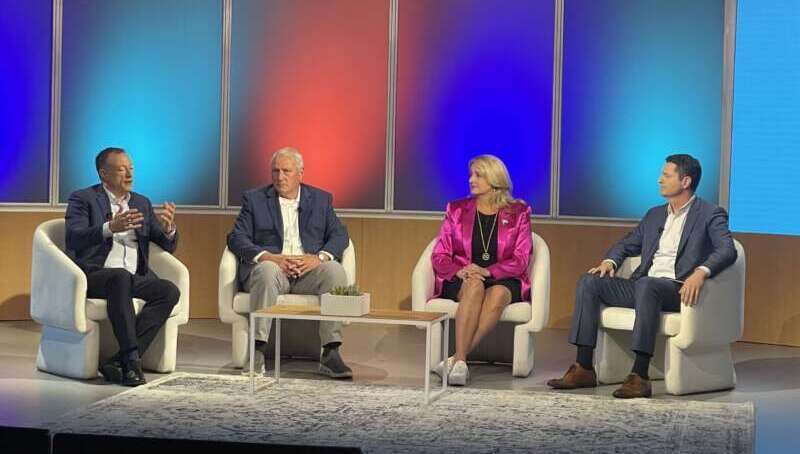
The ability to transform ideas into innovation quickly and efficiently is vital for Federal agencies. Building the next big breakthrough requires managing resources, data, and people to meet mission demands.
During the second day of Dell Technologies World in Las Vegas, Nevada, two former top Federal officials urged the government and Congress to continue to move the ball forward on modernizing technology and keeping customers at the center of that process.
“We’re not prioritizing those initiatives or funding them in ways that match the pace of technology,” former Federal CIO Suzette Kent said on May 23. “Legacy technologies are like ticking time bombs.”
Kent – who coined the term “cloud smart” during her tenure as Federal CIO – emphasized that the Federal government should not go just through modernization but complete transformation and avoid “enhancing and moving to the next release of the technology, but rethinking how we solve for mission – regardless of what the agency is – and using current, available technology to leapfrog and change the business processes.”
Kent also emphasized the idea of putting “timers” on Federal tech policy, so it has the ability to move forward. “It needs to be continually evaluated,” the former CIO said.
Mike Murray, a retired U.S. Army general and the first commanding general of the U.S. Army Futures Command, said during Dell Technologies World that it’s critical the CIO no longer sits at the table alone.
“The users are probably the most important person for the Federal government at the end of the day,” Murray said. The retired general explained the importance of soldier-centered design – noting that the Army’s goal is to get soldiers involved in developing and picking up the software from the get-go.
Kent agreed with Murray, explaining that customer experience (CX) has been a priority for the current administration, as with previous administrations.
“Customer experience – user experience – that has become a term or a label to catch a lot of really important work,” like making mobile websites and digitizing paper, Kent explained.
“It’s an important initiative,” she said. “Putting the individual that is participating – and in the other side of the equation – in the conversation.”
John Roese, the president and global CTO of Dell Technologies – which just announced a brand new private and public-sector Zero Trust project during the conference – noted that there has been an “appetite” for policy change within government.
“I would love to see something emerge from the government. A long term vision of what the future, from a technical perspective, needs to look like,” Roese said.
Dell Technologies Senior Vice President of Federal, Jim Kelly, moderated the conversation with the government experts, noting that the themes at this year’s conference – multicloud, edge, zero trust, and AI – are also topics of interest within the Federal government today.
“We’re starting to see some more broad adoption,” Kelly said. “That is the next generation,” the Dell executive said of the emerging technologies. “We think that’s going to make a big impact across the board.”
Murray noted that there are a lot of good people inside of the DoD trying to change how the government sees technology and innovation. “This is just going to be a slow process because you’ve got people who have been there for a long, long time – a lot of resistance.”
“There is a lot of tension with everything we’re talking about today,” he continued, “It’s going to get better, we’re just going to have to be a bit patient because it is a very big bureaucracy that was built to resist change.”
As the Federal session at Dell Technologies World concluded, Murray said that agencies and departments need to understand what’s critical and what’s important so they can prioritize their modernization and customer experience processes.
Kent, who was the Federal CIO during the last few years of the Trump administration and when the coronavirus pandemic began, said the government needs to focus on filling mission and managing risk, but that in order “to make progress, we have to make it a national priority.”
She said that Federal agencies were so successful in deploying a digital government at the being of the COVID-19 crisis because they made it a priority, and it got all of the focus and resources it needed to be successful.
“With focus, we took the largest government workforce digital in two weeks. We put out more money from the SBA and the Department of Treasury in a few weeks than they have done in the years combined,” Kent said. “It was a priority.”
The former CIO said the government needs to make cyber and IT modernization a priority like they did during COVID, and “continue to dialogue with not only the Federal agencies but with our partners as well.”
